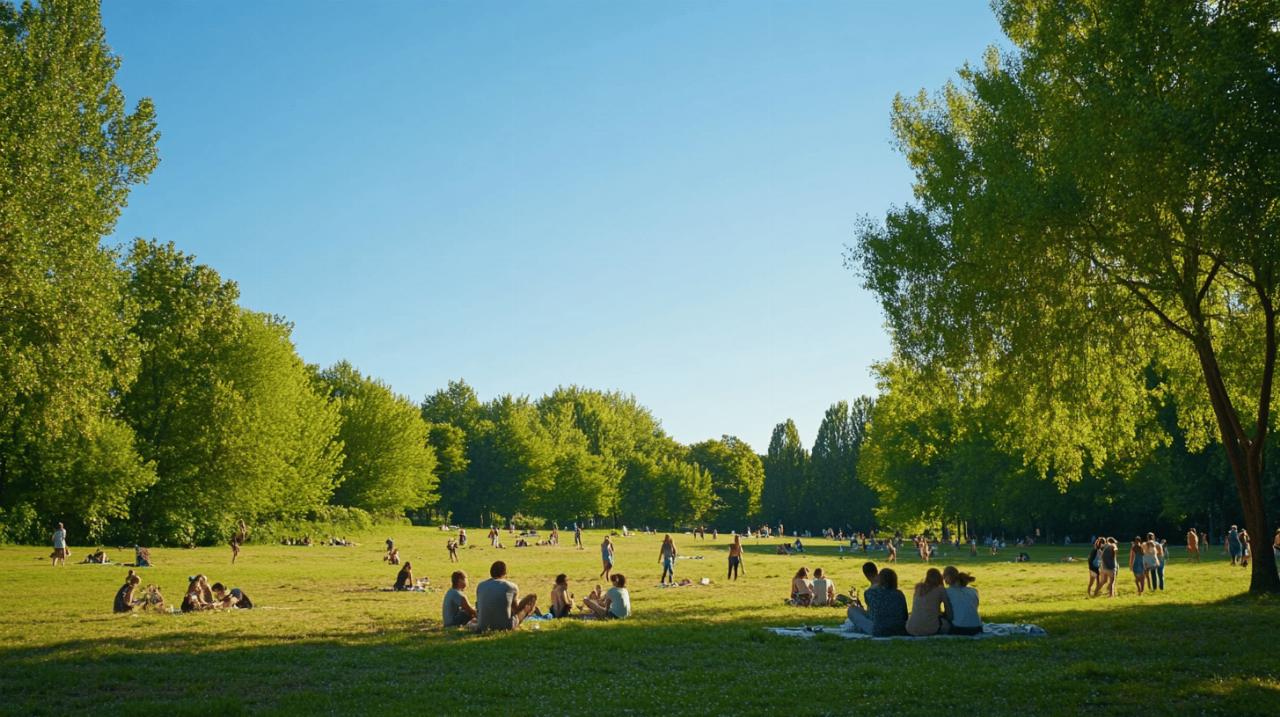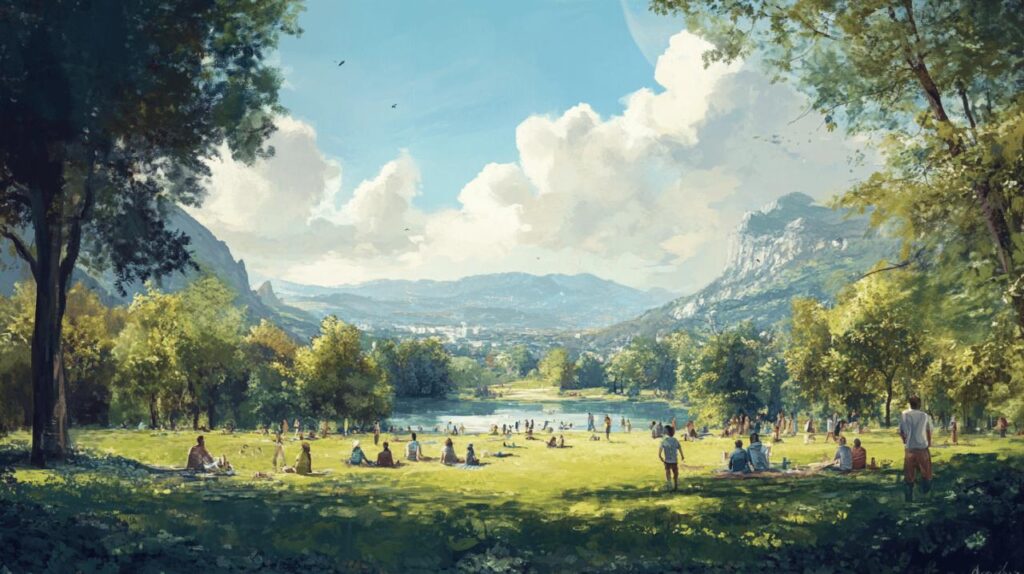Across Britain, a quiet revolution is taking place in the way people experience fitness, leisure, and community connection. Green spaces from Manchester to Brighton are being reimagined as vibrant hubs where trail running enthusiasts, bootcamp devotees, and families converge for experiences that blend athleticism with entertainment. This transformation draws inspiration from continental traditions, where outdoor fortnight celebrations have long championed the philosophy that fitness should be accessible, joyful, and deeply connected to nature. As urban dwellers increasingly seek meaningful alternatives to sterile gym environments, the movement toward open-air activities is reshaping not just how Britons exercise, but how they perceive public spaces altogether.
How open-air festivals are revolutionising fitness culture across british parks
The concept of the festival has evolved dramatically beyond music and food. Today, parks throughout the United Kingdom host multifaceted outdoor events that combine physical challenges with cultural programming. These gatherings transform ordinary green spaces into dynamic venues where morning yoga sessions transition seamlessly into afternoon trail runs, followed by evening entertainment that might include anything from live performances to curated cinema experiences. The traditional boundaries separating fitness from leisure have become increasingly porous, creating environments where participants engage with their surroundings in entirely new ways.
From Cinema Screenings to Bootcamp Sessions: The Rise of Multi-Purpose Outdoor Venues
What makes these outdoor festivals particularly compelling is their refusal to be categorised. A single location might host a sunrise bootcamp session for dedicated athletes, followed by a family-oriented camping weekend complete with organised games, and culminate in an open-air projection of beloved films as darkness falls. This versatility reflects a growing understanding that public parks serve multiple constituencies, and that programming should reflect that diversity. The fenetre between different activities has narrowed considerably, with organisers deliberately designing schedules that encourage participants to sample various offerings rather than committing to a single pursuit.
The practical infrastructure supporting these events has become increasingly sophisticated. Temporary emplacements for equipment, portable screens for video presentations, and carefully planned layouts ensure that spaces can transition between functions without compromising the experience. Organisers have learned valuable lessons from continental models, particularly regarding the quinzaine format that allows sufficient time for communities to fully engage with programming. A fortnight provides enough duration for word-of-mouth promotion to take effect, for families to plan visits around work schedules, and for the events themselves to build momentum and atmosphere.
Community Associations Leading the Charge in Transforming Green Spaces into Activity Hubs
The driving force behind this transformation often comes not from commercial enterprises but from grassroots community associations committed to democratising access to outdoor experiences. These organisations understand intimately the needs and rhythms of their neighbourhoods, allowing them to design programming that resonates authentically. Rather than imposing formulaic fitness regimes, they cultivate environments where participation feels organic and welcoming. The association model ensures that events remain affordable and inclusive, removing financial barriers that might otherwise exclude families or individuals from lower income brackets.
These community-led initiatives frequently partner with local schools, creating pathways for young people to develop lasting relationships with outdoor activity. When an ecole becomes involved in organising weekend camping trips or coordinating jeux that get children moving in natural settings, the benefits extend far beyond immediate physical health. Students begin to perceive their local parks as extensions of their learning environment, spaces where lessons about ecology, teamwork, and personal challenge unfold naturally. This educational dimension adds depth to what might otherwise be purely recreational programming, embedding outdoor culture into the fabric of childhood experience.
Trail running meets festival atmosphere: the new wave of plein air sporting events
Trail running has emerged as the quintessential activity embodying this new outdoor ethos. Unlike road running, which often feels solitary and repetitive, trail running through woodland paths and across open meadows offers constantly changing scenery and terrain. When embedded within a festival atmosphere, the sport transcends its competitive origins to become a communal celebration of movement and nature. Participants describe the experience less as training and more as exploration, with the social dimension adding richness that gymnasium treadmills simply cannot replicate.
Why Runners Are Swapping Gyms for Natural Emplacements and Woodland Routes
The appeal of natural emplacements for running extends beyond aesthetics, though the visual pleasure of woodland trails certainly contributes to their popularity. Research increasingly demonstrates that exercise conducted in natural environments produces psychological benefits that indoor equivalents cannot match. The variable terrain challenges stabilising muscles rarely engaged on flat surfaces, whilst the need to navigate roots, rocks, and elevation changes demands a level of presence that borders on meditative. Runners report that outdoor sessions leave them feeling more mentally refreshed than equivalent indoor workouts, even when the physical exertion measures as comparable.
The festival format amplifies these benefits by creating structure and social accountability. When a plein air event is scheduled, participants commit in advance, reducing the likelihood of skipping sessions due to weather or motivation dips. The communal aspect transforms what might be a solitary slog into a shared adventure, with runners of varying abilities encouraging one another and celebrating collective achievement. Post-run gatherings, often featuring simple refreshments and casual conversation, cement social bonds that extend beyond the sporting context, building genuine community cohesion.
The Role of Schools and Local Organisations in Promoting Outdoor Athletic Culture
Educational institutions have recognised the value of connecting students with outdoor athletic culture from an early age. Progressive ecole programmes now incorporate trail running and outdoor bootcamp elements into physical education curricula, moving beyond traditional team sports to offer activities that students can sustain throughout their lives. These initiatives often culminate in participation at larger community festivals, where young people experience the thrill of being part of something bigger than a classroom exercise. The transition from school-organised activity to independent participation in community events marks an important developmental milestone, fostering autonomy and confidence.
Local organisations complement these educational efforts by maintaining accessible outdoor spaces and coordinating regular events that welcome newcomers. They understand that sustainable outdoor culture requires consistent programming rather than isolated spectacular events. Weekly or fortnightly activities create rhythms that allow habits to form, transforming casual participants into committed advocates. The quinzaine model, with its extended timeframe, proves particularly effective in this regard, providing multiple entry points for individuals unsure about committing to a single session but willing to explore over a longer period.
Camping, Cinema, and Cross-Training: The Quinzaine Phenomenon Blending Leisure with Fitness
 Perhaps the most innovative aspect of the contemporary outdoor movement is its deliberate integration of leisure activities with fitness programming. The quinzaine format allows organisers to create comprehensive experiences where camping trips include structured athletic training, and evenings feature entertainment that complements rather than contradicts daytime physical exertion. This holistic approach acknowledges that wellness encompasses mental and social health alongside physical fitness, and that rest and recreation form essential components of any sustainable athletic practice.
Perhaps the most innovative aspect of the contemporary outdoor movement is its deliberate integration of leisure activities with fitness programming. The quinzaine format allows organisers to create comprehensive experiences where camping trips include structured athletic training, and evenings feature entertainment that complements rather than contradicts daytime physical exertion. This holistic approach acknowledges that wellness encompasses mental and social health alongside physical fitness, and that rest and recreation form essential components of any sustainable athletic practice.
Evening projection experiences that complement daytime physical activities
As daylight fades and participants complete their training sessions or trail runs, outdoor cinema screenings provide a perfect transition into evening relaxation. These projection events have evolved considerably from simple movie showings to become curated experiences that enhance the overall festival atmosphere. Organisers thoughtfully select films that resonate with themes of adventure, nature, and human achievement, reinforcing the values that drew participants to the outdoor activities in the first place. The communal viewing experience, with audiences gathered on blankets under darkening skies, creates memorable moments that participants associate with their fitness journey.
The technical aspects of outdoor cinema have improved dramatically, with high-quality video equipment and sound systems ensuring that the viewing experience rivals indoor venues. Yet the outdoor setting adds dimensions that traditional cinemas cannot offer: the rustling of leaves, the gradual emergence of stars, the subtle temperature shifts as night deepens. These sensory elements transform film watching from passive consumption into an immersive experience intimately connected to the natural environment. For families camping as part of quinzaine events, these evening projections provide entertainment that keeps children engaged whilst allowing parents to relax after active days.
How outdoor expositions and jeux are creating holistic wellness experiences
Beyond structured athletic programming and evening entertainment, successful outdoor festivals incorporate exposition elements that educate participants about environmental stewardship, nutrition, and sustainable living. These exhibitions typically feature local vendors, conservation organisations, and wellness practitioners, creating marketplaces of ideas and products that align with outdoor values. Rather than feeling commercial, well-curated expositions enhance the festival atmosphere by connecting participants with resources that support their evolving outdoor lifestyles.
The inclusion of jeux, particularly those designed for families and mixed-age groups, ensures that outdoor events welcome participants regardless of fitness level or athletic ambition. Traditional games adapted for outdoor settings, collaborative challenges that require teamwork rather than individual prowess, and creative activities that engage imagination alongside physical coordination all contribute to an inclusive atmosphere. Children who might resist formal exercise enthusiastically participate in games that disguise physical activity as play, whilst adults rediscover the joy of movement unconnected to performance metrics or weight management goals.
Building a Sustainable Outdoor Movement: What Britain Can Learn from Continental Initiatives
As British outdoor culture continues evolving, looking toward established continental models offers valuable insights. European traditions of plein air recreation, deeply embedded in cultural practice, demonstrate that outdoor activity can become normalised rather than exceptional. In regions where quinzaine celebrations have occurred for generations, participation spans all age groups and social classes, reflecting successful integration of outdoor culture into everyday life. British organisers are adapting these models to suit local contexts whilst preserving the underlying philosophy that outdoor experiences should be accessible, joyful, and community-centred.
The infrastructure behind successful plein air programmes: from fenetre bookings to video documentation
Sustainable outdoor programming requires robust infrastructure extending beyond physical facilities. Booking systems that allow participants to reserve camping emplacements, register for specific activities, and plan their quinzaine participation in advance ensure that events run smoothly without overwhelming organisers. Digital platforms have become essential tools, providing fenetre into upcoming events, enabling community members to coordinate attendance, and facilitating communication between association coordinators and participants.
Documentation through video and photography serves multiple purposes within the outdoor movement. High-quality recordings of events provide promotional material that attracts new participants whilst offering existing community members opportunities to relive cherished experiences. More importantly, video documentation creates institutional memory, allowing organisers to analyse what worked well and identify areas for improvement. When schools participate in outdoor programmes, video records become valuable educational resources, extending the impact of single events across multiple classroom settings and inspiring future generations to engage with outdoor culture.
Future Prospects for British Outdoor Culture: Integrating Education, Entertainment, and Exercise
The trajectory of British outdoor culture appears promising, with increasing recognition that green spaces serve functions far beyond passive recreation. As more community associations embrace comprehensive programming that blends fitness, entertainment, and education, the artificial divisions separating these domains continue dissolving. The festival format has proven particularly adaptable, capable of incorporating diverse activities whilst maintaining coherent identity centred on outdoor experience and community connection.
Looking forward, the challenge lies in ensuring that the outdoor movement remains accessible and inclusive as it gains popularity. Commercial interests inevitably emerge around successful cultural phenomena, sometimes introducing pricing structures or exclusive elements that undermine grassroots foundations. Protecting the democratic ethos that characterises the best outdoor festivals requires vigilance from community associations and participants alike. When quinzaine events maintain their commitment to affordability, when camping remains open to families regardless of income, and when programming welcomes novices alongside experienced athletes, the outdoor movement fulfils its potential as genuinely transformative social force. The future of British outdoor culture depends not on spectacular innovations but on consistent, community-led efforts that make natural spaces feel welcoming, vibrant, and essential to everyday life.







